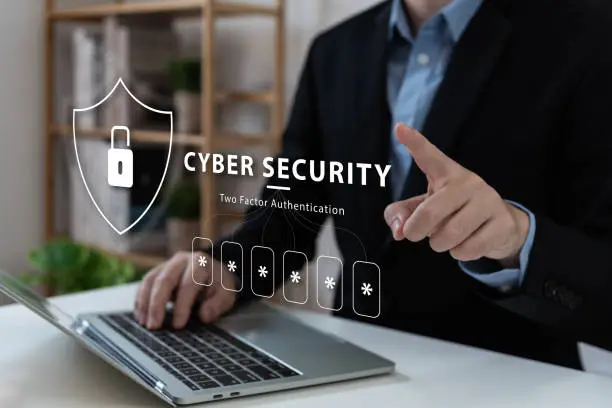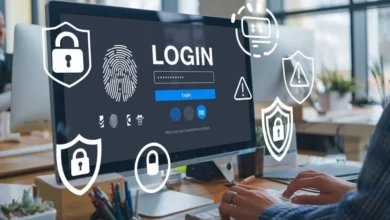How to Avoid Malware and Ensure Online Safety

Post Preview
Key Takeaways
- Understand the basics of malware and its effects.
- Learn practical steps to prevent malware infections.
- Explore the role of antivirus software in maintaining security.
- Understand safe browsing practices and habits.
- Identify common signs of infection and actions to take.
Introduction
In today’s digital age, staying safe online has never been more crucial. Malware, short for malicious software, poses significant risks to both personal and organizational data. Using tools like the Shift.com app can help users manage their online activities and enhance security. This article will provide insights into avoiding malware and maintaining a secure online environment.
Understanding malware and knowing the practical steps to prevent infections can save you from potential data loss, financial damage, and identity theft. Because cyber threats are constantly evolving, it is imperative that you be alert about online safety in order to safeguard your digital presence.
What Is Malware?
Malware encompasses a range of malicious software created to cause harm. It includes viruses, spyware, ransomware, and more. Understanding the types of malware can help recognize and prevent infections. Notable categories of malware include:
- Viruses: These replicate themselves by modifying other programs and inserting their own code. Often spreading through email attachments or downloads, viruses can cause significant data loss and corruption.
- Spyware: Malware that secretly monitors your activities, recording keystrokes, browsing habits, and personal information. Spyware can lead to identity theft and unauthorized access to sensitive data.
- Ransomware: Takes control of a user’s files and demands payment to restore access. One of the most financially destructive kinds of malware encrypts your data, rendering it unreadable unless a ransom is paid.
Preventing Malware Infections
Prevention starts with awareness and proactive measures. Here are practical steps to reduce the risk of malware:
- Regular Updates: Ensure your operating system and software are up-to-date. Security patches are frequently included in updates to fix vulnerabilities. Many malware attacks exploit known vulnerabilities that have already been patched in the latest updates.
- Safe Downloads: Download software only from trusted sources. Avoid clicking on unverified links or pop-ups. Always check the credibility of the website and the authenticity of the file before trusting your system’s security with it.
- Email Vigilance: Be cautious with email attachments and links. Verify the sender’s authenticity before interacting with any content. Phishing emails are a common method of delivering malware, so scrutinize each email carefully.
You may considerably lower your risk of coming into contact with malware by keeping up with the most recent dangers and using these precautionary actions.
Antivirus Software: A Necessary Tool
Antivirus software acts as a primary defense against malware. It detects, prevents, and removes malicious programs. It’s advisable to use reputable antivirus solutions and ensure real-time protection features are enabled. A discussion by CNET details the benefits of using antivirus software effectively.
Antivirus programs are continually updated to recognize new threats. They offer real-time protection by scanning your system activity and internet traffic for unusual behavior indicative of malware. Comprehensive antivirus suites also include additional features such as firewalls, secure browsing tools, and protection against phishing attacks.
While no antivirus can offer 100% protection, they are a critical line of defense that should be part of your overall cybersecurity strategy. Combining antivirus software with other preventive measures enhances your online safety significantly.
Safe Browsing Practices
Adopting safe browsing habits can significantly reduce malware risks. Here are some key practices:
- HTTPS Encryption: Prefer websites that use HTTPS to ensure encrypted data transmission. This adds a layer of security by protecting data exchanged between your browser and the website.
- Ad Blockers: Use ad blockers to prevent malicious ads from loading. Malvertising, or malicious advertising, is a method where ads are used to deliver malware. Ad blockers can assist in defending you from these dangers.
- Incognito Mode: Use incognito mode to avoid tracking and minimize exposure to malicious sites. While it doesn’t make you anonymous, it can reduce the storage of browsing data and avoid some tracking methods.
Safe browsing is an essential aspect of protecting your online presence. For more guidelines regarding safe browsing, check out PCWorld’s guide.
Recognizing Infection Signs
Identifying symptoms of malware early can mitigate damage. Common signs include:
- Sluggish Performance: A slow system may indicate malware activity. Malware utilizes system resources, which can significantly slow down your computer or device.
- Unusual Pop-ups: Frequent and unexpected pop-ups can be a sign of infection. These could range from ads to fake virus alerts that prompt you to download more malware.
- Unauthorized Changes: Look out for changes in browser settings or default page redirects. Malware can alter browser settings, change your homepage, or redirect your internet searches to malicious websites.
Being vigilant about these signs and taking prompt action can help minimize the impact of a malware infection.
Steps to Take If Infected
If you suspect a malware infection, immediate action is necessary. Here are crucial steps you should follow:
- Disconnect from the Internet: Isolate the device to prevent the spread of malware. This stops the malware from communicating with command and control servers, which can prevent data theft and further spread.
- Run Antivirus Scan: Use your antivirus software to identify and remove threats. Perform a full system scan to ensure all malware is detected and eliminated.
- Restore Data: If necessary, restore your system to a previous clean state. Having reliable backups is invaluable in such scenarios as it allows you to restore your data without paying ransoms or losing information.
Responding swiftly to a suspected malware infection can help limit damage and restore normal operations quickly. Regular backups and up-to-date antivirus software can aid in a faster recovery.
Conclusion
Maintaining online safety requires vigilance and proactive measures. You can protect your devices and data from malicious threats by understanding malware and following best practices. Stay informed and regularly update your defenses to navigate the digital world securely.








